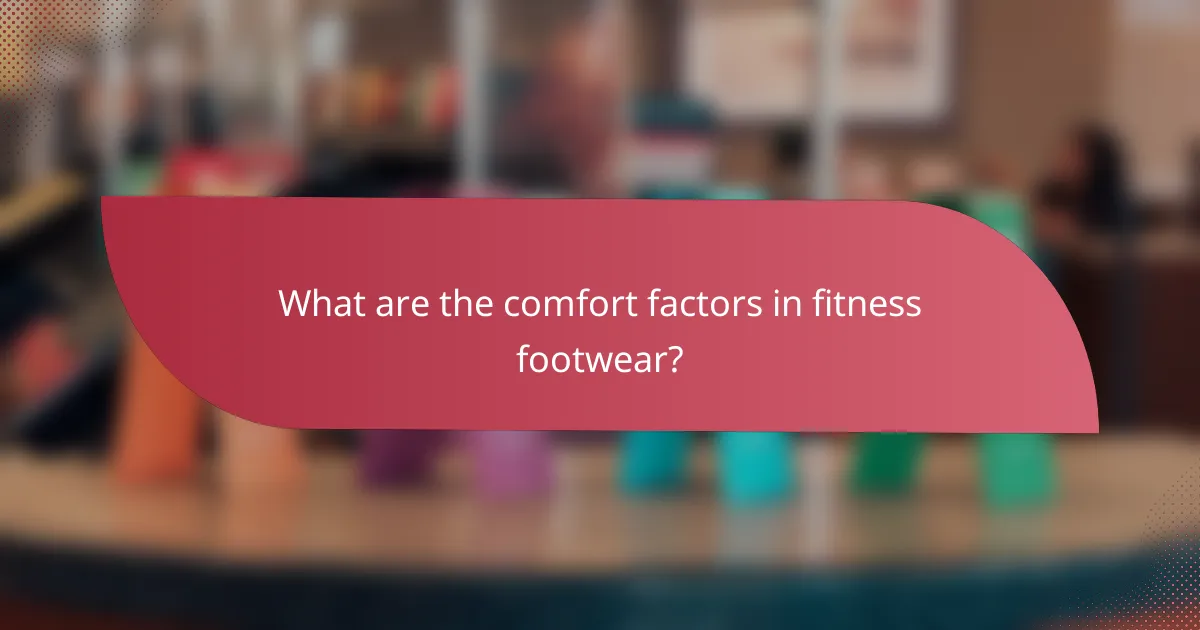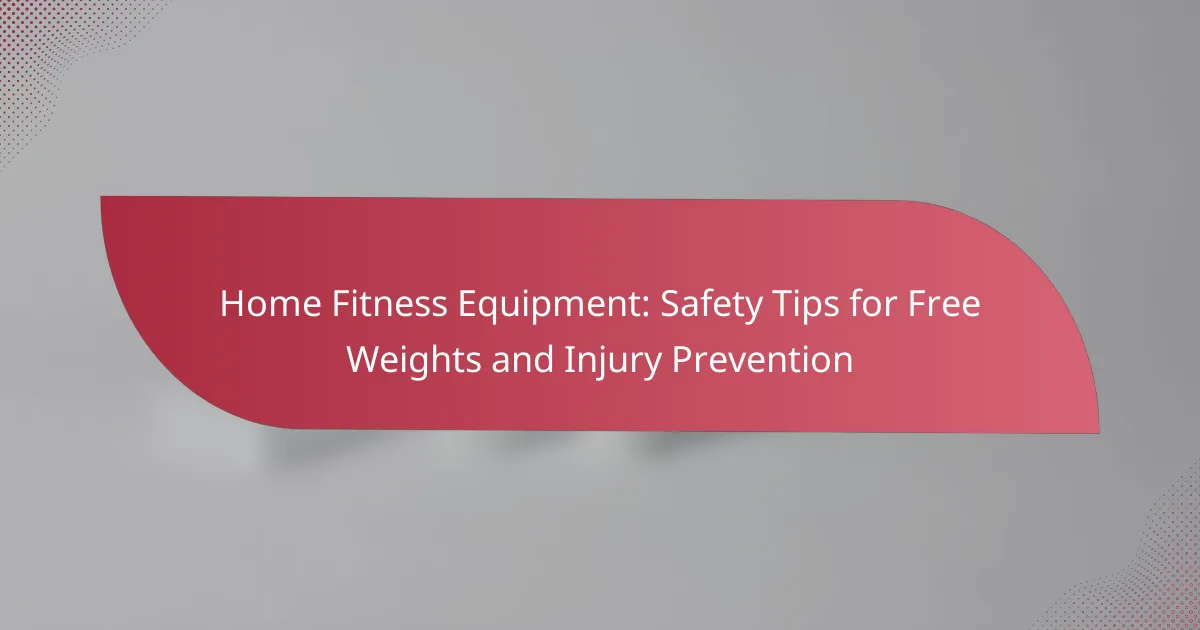Footwear plays a crucial role in home fitness by impacting comfort, performance, and the risk of injury. Selecting the right shoes tailored to your workout type can enhance your exercise experience while providing essential support and stability, ultimately helping to prevent common injuries associated with physical activity.

How does footwear impact home fitness in the US?
Footwear significantly affects home fitness by influencing comfort, performance, and injury risk. Choosing the right shoes can enhance your workout experience and help prevent common injuries associated with physical activity.
Footwear cushioning benefits
Cushioning in footwear absorbs impact during exercises, reducing stress on joints and muscles. This is particularly beneficial for high-impact activities like jumping or running, where the risk of injury can increase without adequate support.
Look for shoes with adequate cushioning materials, such as EVA foam or gel inserts, which can provide a comfortable experience. A well-cushioned shoe can enhance endurance by minimizing fatigue during longer workouts.
Stability and support features
Stability and support in footwear are crucial for maintaining proper alignment and balance during workouts. Shoes designed for specific activities, like cross-training or weightlifting, often feature reinforced arches and heel counters to provide necessary support.
When selecting footwear, consider your primary fitness activities. For instance, running shoes typically offer more flexibility, while weightlifting shoes provide a firmer base. Ensuring a proper fit can further enhance stability and prevent injuries.

What are the best footwear options for home workouts?
The best footwear options for home workouts prioritize comfort, support, and stability. Look for shoes designed specifically for your workout type, ensuring they provide adequate cushioning and grip to prevent injuries.
Top brands for fitness footwear
Several brands are renowned for their quality fitness footwear. Nike, Adidas, and New Balance consistently rank high for their innovative designs and technology that enhance performance. Other notable brands include Asics and Brooks, which are particularly favored for running and cross-training shoes.
When selecting a brand, consider your specific needs, such as arch support and fit. Many brands offer a range of models tailored to different activities, so it’s beneficial to try on several pairs to find the best match for your foot type.
Best shoes for specific workouts
For high-intensity interval training (HIIT), shoes with a flat sole and good lateral support, like the Reebok Nano or Nike Metcon, are ideal. These shoes provide stability during quick movements and jumps, reducing the risk of ankle injuries.
If you’re focusing on running, look for shoes with ample cushioning and shock absorption, such as the Brooks Ghost or Hoka One One. These models help minimize impact on joints during longer sessions.
For yoga or Pilates, lightweight shoes with a flexible sole, such as the Vibram FiveFingers or a good pair of grip socks, can enhance balance and stability. These options allow for better foot movement and connection with the floor.

How can proper footwear prevent injuries?
Proper footwear can significantly reduce the risk of injuries during physical activities by providing adequate support, cushioning, and stability. Choosing the right shoes tailored to your specific exercise type helps to align your body correctly and absorb impact, which minimizes strain on your muscles and joints.
Common injuries from improper footwear
Improper footwear can lead to a variety of injuries, including sprains, strains, and stress fractures. For instance, wearing shoes without proper arch support may result in plantar fasciitis, while inadequate cushioning can cause shin splints and joint pain.
Additionally, blisters and calluses are common issues arising from shoes that do not fit well or lack proper materials. These injuries can hinder your performance and lead to longer recovery times, impacting your fitness routine.
Footwear features that reduce injury risk
Key features that help reduce injury risk include adequate arch support, cushioning, and a proper fit. Shoes designed for specific activities, such as running or cross-training, often incorporate these elements to enhance performance and comfort.
Look for footwear with shock-absorbing soles to minimize impact on your joints and breathable materials to keep your feet dry. A snug fit without being too tight is crucial; ensure there is enough room in the toe box to prevent discomfort during movement.

What are the comfort factors in fitness footwear?
Comfort in fitness footwear is influenced by several key factors, including breathability, moisture control, and proper fit. Selecting shoes that address these aspects can enhance performance and reduce the risk of injury during workouts.
Breathability and moisture control
Breathability refers to the shoe’s ability to allow air circulation, which helps keep feet cool and dry. Materials like mesh and specialized fabrics enhance airflow, reducing sweat accumulation and discomfort during exercise.
Moisture control is crucial for preventing blisters and fungal infections. Look for footwear with moisture-wicking properties that draw sweat away from the skin, keeping feet dry. Shoes designed with these features often include ventilation holes or moisture-resistant linings.
Fit and sizing considerations
Proper fit is essential for comfort and injury prevention in fitness footwear. Shoes should provide enough room in the toe box while securing the heel to prevent slippage. It’s advisable to try on shoes later in the day when feet are slightly swollen to ensure a better fit.
When determining size, consider that different brands may have slight variations in sizing. Always refer to the brand’s specific size chart and, if possible, try on shoes with the type of socks you plan to wear during workouts. A snug, yet comfortable fit is key to optimal performance.

What criteria should you consider when selecting fitness footwear?
When selecting fitness footwear, prioritize comfort, support, and the specific needs of your activities. Proper footwear can enhance performance, reduce injury risk, and improve overall workout enjoyment.
Foot arch type and shoe compatibility
Your foot arch type—flat, neutral, or high—significantly influences the type of shoe you should choose. Flat arches often benefit from stability shoes that provide extra support, while high arches may require cushioning shoes to absorb impact.
To determine your arch type, wet your foot and step on a piece of cardboard. The imprint will help you identify your arch and guide you in selecting compatible footwear. Always try on shoes and walk around to ensure they fit well and feel comfortable.
Activity-specific footwear requirements
Different fitness activities demand specific footwear features. For instance, running shoes should offer ample cushioning and flexibility, while cross-training shoes need a stable base for lateral movements.
Consider the terrain and surface you’ll be exercising on. Trail running shoes have deeper treads for grip on uneven surfaces, while gym shoes may have flatter soles for better balance during weightlifting. Always match your footwear to your primary activity to enhance performance and prevent injuries.

How do you care for and maintain fitness footwear?
To care for and maintain fitness footwear, regularly clean them and monitor their condition to ensure optimal performance and longevity. Proper maintenance can prevent injuries and enhance comfort during workouts.
Cleaning and drying techniques
To clean your fitness shoes, remove dirt and debris with a soft brush or cloth. For deeper cleaning, use mild soap and water, avoiding harsh chemicals that can damage materials.
After cleaning, allow your shoes to air dry at room temperature, avoiding direct sunlight or heat sources that can warp the shape. Stuffing them with newspaper can help absorb moisture and maintain their form.
When to replace your fitness shoes
Fitness shoes should generally be replaced every 300 to 500 miles, depending on usage and terrain. Signs of wear include flattened soles, visible cracks, or loss of cushioning.
Additionally, if you experience discomfort or pain during workouts that wasn’t present before, it may be time to invest in a new pair. Regularly assessing your footwear can prevent injuries and ensure you remain comfortable during your fitness activities.

What are emerging trends in home fitness footwear?
Emerging trends in home fitness footwear focus on sustainability, comfort, and advanced technology. As more people engage in home workouts, the demand for shoes that enhance performance while being environmentally friendly is growing.
Eco-friendly materials in footwear
Eco-friendly materials are becoming increasingly popular in the production of fitness footwear. Brands are now using recycled plastics, organic cotton, and natural rubber to create shoes that minimize environmental impact. This shift not only appeals to environmentally conscious consumers but also promotes sustainability in the industry.
When selecting eco-friendly footwear, look for certifications such as Global Organic Textile Standard (GOTS) or materials labeled as recycled. These indicators can help ensure that the shoes you choose are genuinely sustainable and contribute to reducing waste.
Technological advancements in shoe design
Technological advancements are revolutionizing shoe design, enhancing comfort and performance for home fitness enthusiasts. Features such as responsive cushioning, breathable fabrics, and adaptive fit systems are now common in many models, providing better support during workouts.
Consider shoes with moisture-wicking properties and lightweight designs to improve comfort during extended use. Additionally, look for brands that incorporate 3D printing technology, as this allows for customized fits that cater to individual foot shapes, enhancing overall performance and reducing injury risk.



